 W
WEdwardian architecture is a Neo-Baroque architectural style that was popular in the British Empire during the Edwardian era (1901–1910). Architecture up to the year 1914 may also be included in this style.
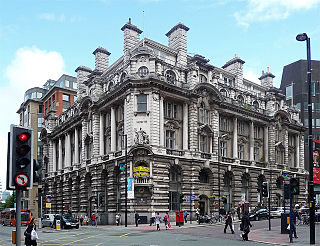 W
W53 King Street is an Edwardian Baroque bank on King Street in Manchester, England. Designed by architect Charles Heathcote, it opened in 1913 and was granted Grade II listed building status in 1974. It used to house a branch of Lloyds TSB. In 2009, the building was sold for £6 million. The building stands on the site of the old Manchester Town Hall.
 W
WAntrim House of Wellington, New Zealand, was completed in 1905 for Robert Hannah (1845–1930) and his wife Hannah Hannah (1852–1928).
 W
WThe Arts and Crafts movement was an international trend in the decorative and fine arts that developed earliest and most fully in the British Isles and subsequently spread across the British Empire and to the rest of Europe and America.
 W
WThe Ashton Memorial is a folly in Williamson Park, Lancaster, Lancashire, England built between 1907 and 1909 by the millionaire industrialist Lord Ashton in memory of his second wife, Jessy, at a cost of £87,000.
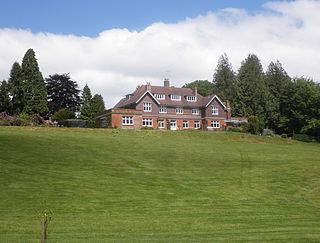 W
WAshwick House is a Grade II listed Edwardian mansion in Ashwick, four miles northwest of Dulverton, Exmoor, Somerset, England.
 W
WBallard Estate is an old European style business district situated in South Mumbai next to Fort. Located between Chhatrapati Shivaji Maharaj Terminus and Fort of South Mumbai, it hosts the offices of shipping companies and the headquarters of the Mumbai Port Trust at the Port House. It also has the Reliance Centre, many mid-priced hotels and a noted Irani cafe, Britannia.
 W
WThe Balmoral, originally built as the North British Hotel, is a luxury five-star property and landmark in Edinburgh, Scotland. It is located in the heart of the city at the east end of Princes Street, the main shopping street beneath the Edinburgh Castle rock, and the southern edge of the New Town.
 W
WA bay-and-gable is a distinct architectural style of house that is ubiquitous in older neighbourhoods of Toronto, Ontario, Canada. The most prominent feature is the large bay window that usually covers more than half of the front of the house, surmounted by a gable roof. The classic bay and gable is a red brick semi-detached structure that is two and a half storeys tall, though many variations also exist. It was one of the most common forms of house built in late nineteenth and early twentieth century Toronto. The older parts of the city such as Cabbagetown and Little Italy are still home to many hundreds of examples.
 W
WBelfast City Hall is the civic building of Belfast City Council located in Donegall Square, Belfast, Northern Ireland. It faces North and effectively divides the commercial and business areas of the city centre. It is a Grade A listed building.
 W
WThe Birkbeck Building is a four-storey office building in downtown Toronto, Ontario. It is a National Historic Site of Canada and is protected under Part IV of the Ontario Heritage Act since 1976 with an Ontario Heritage Trust easement on the property.
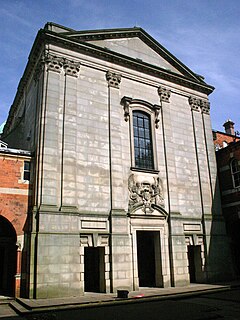 W
WThe Birmingham Oratory is an English Catholic religious community of the Congregation of the Oratory of St. Philip Neri, located in the Edgbaston area of Birmingham. The community was founded in 1849 by St. John Henry Newman, Cong.Orat., the first house of that congregation in England.
 W
WBrownlow House, also known as Brownlow Castle and Lurgan Castle, is a Grade A listed 19th century house located in Lurgan, Northern Ireland. It was built for Irish politician Charles Brownlow, 1st Baron Lurgan in 1833 by Scottish architect William Henry Playfair and was used as a military headquarters in both world wars.
 W
WCartwright Hall is the civic art gallery in Bradford, West Yorkshire, England, situated about a mile from the city centre in the Manningham district. It was built on the former site of Manningham Hall using a gift of £40,000 donated by Samuel Lister and it is named after Edmund Cartwright. The gallery which opened in 1904 initially had a display of artworks loaned from other galleries and private collections until it was able to purchase a permanent collection of Victorian and Edwardian works using money raised by the 1904 Bradford Exhibition.
 W
WCastle Drogo is a country house and mixed-revivalist castle near Drewsteignton, Devon, England. Constructed between 1911 and 1930, it was the last castle to be built in England. The client was Julius Drewe, the hugely successful founder of the Home and Colonial Stores. Drewe chose the site in the belief that it formed part of the lands of his supposed medieval ancestor, Drogo de Teigne. The architect he chose to realise his dream was Edwin Lutyens, then at the height of his career. Lutyens lamented Drewe's determination to have a castle but nevertheless produced one of his finest buildings. The architectural critic, Christopher Hussey, described the result: "The ultimate justification of Drogo is that it does not pretend to be a castle. It is a castle, as a castle is built, of granite, on a mountain, in the twentieth century".
 W
WCentral Fire Station, Yangon is a colonial-era landmark in Yangon, Myanmar of historical significance, and designated on the Yangon City Heritage List. The building continues to be used as a fire station.
 W
WCity Hall is a civic building in Cathays Park, Cardiff, Wales, UK. It serves as Cardiff's centre of local government. It was built as part of the Cathays Park civic centre development and opened in October 1906. Built of Portland stone, it is an important early example of the Edwardian Baroque style. It is a Grade I listed building.
 W
WClarence Gate Gardens, also known as Clarence Gate Mansions, are Edwardian, Arts and Crafts and Art-Nouveau-inspired mansion blocks next to Regent's Park in Marylebone, London.
 W
WConduit Street is a street in Mayfair, London. It connects Bond Street to Regent Street.
 W
WFederation architecture is the architectural style in Australia that was prevalent from around 1890 to 1915. The name refers to the Federation of Australia on 1 January 1901, when the Australian colonies collectively became the Commonwealth of Australia.
 W
WHanover Building is an Grade II office building in the NOMA district of Manchester, United Kingdom.
 W
WHis Majesty's Theatre is an Edwardian Baroque theatre in Perth, Western Australia. Constructed from 1902 to 1904 during a period of great growth for the town, the theatre is located on the corner of Hay Street and King Street in Perth's central business district.
 W
WHolmlea Primary School is a Category B listed former school in Glasgow. It was built in 1908 and closed in 2005. The buildings are currently classified as being in poor condition.
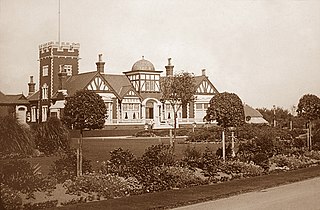 W
WThe Illawalla was an historic Edwardian single-story building in the Skippool area of Thornton, Lancashire, England. Built in 1902, it was demolished in 1996, after lying derelict for six years, to make way for three exclusive homes. Its name is preserved in the name of the road on which these houses now stand and also in the name of the adjacent cricket club, whose grounds partly occupy the land The Illawalla stood on.
 W
WIndia House in Whitworth Street, Manchester, England, is a packing and shipping warehouse built in 1906 for Lloyd's Packing Warehouses Limited, which had, by merger, become the dominant commercial packing company in early-20th century Manchester. It is in the favoured Edwardian Baroque style and is steel-framed, with cladding of buff terracotta and red brick with buff terracotta dressings. It is a Grade II* listed building as of 3 October 1974.
 W
WKearsley Mill is a 240,000 sq ft, late period cotton mill located in the small village of Prestolee in Kearsley, Greater Manchester. A near complete example of Edwardian mill architecture, the building now functions as headquarters for a number of businesses and is still used in the continued manufacturing and distribution of textiles by Richard Haworth Ltd Est (1876), part of the Ruia Group. The mill is a Grade II listed building.
 W
WKelvingrove Art Gallery and Museum is a museum and art gallery in Glasgow, Scotland. It reopened in 2006 after a three-year refurbishment and since then has been one of Scotland's most popular visitor attractions. The museum has 22 galleries, housing a range of exhibits, including Renaissance art, taxidermy, and artifacts from ancient Egypt.
 W
WKenmore Asylum, also known as Kenmore Hospital or Kenmore Psychiatric Hospital is a heritage-listed decommissioned psychiatric hospital located in Goulburn, a town in New South Wales, Australia. Construction began in 1894 and opened in 1895, capable of housing 700 patients. In March 1941, the Australian Army accepted an offer from the New South Government, where the Kenmore Asylum would be the site for a military hospital. As a result, patients located at the asylum were moved to various mental institutions in Sydney. In 1946, the Australian Department of Health resumed control of Kenmore Asylum after the army moved out. The property was sold in 2003 and resold in 2010. It is described as one of Australia's "most haunted locations".
 W
WKneesworth Hall, also known as Kneesworth House or Kneesworth House Hospital, is an Edwardian mansion in England, located in Bassingbourn cum Kneesworth, 22.3 miles (35.9 km) south-west of Cambridge in South Cambridgeshire. It was the aristocratic seat of the Nightingale Family and Sydney Holland, 2nd Viscount of Knutsford, between 1600 and 1948. The mansion is set in expansive parkland and backed by a diverse range of foliage and forestry. In October 1984, it was registered as a Grade II listed building. Today, Kneesworth is an acute hospital owned by The Priory Group, a subsidiary of Acadia Healthcare headquartered in Tennessee.
 W
WLancaster House in Whitworth Street, Manchester, England, is a former packing and shipping warehouse built between 1905 and 1910 for Lloyd's Packing Warehouses Limited, which had, by merger, become the dominant commercial packing company in early 20th century Manchester. It is in the favoured Edwardian Baroque style and constructed of red brick and orange terracotta. It is a Grade II* listed building as of 3 October 1974.
 W
WLand Administration Building is a heritage-listed former government building at 142 George Street, Brisbane City, City of Brisbane, Queensland, Australia. It was designed by Thomas Pye and built from 1899 to 1905 by Arthur Midson for the Queensland Government. It was also known as the Executive Building or (now) the Old Executive Building. It was added to the Queensland Heritage Register on 21 October 1992.
 W
WThe Mitchell Library is a large public library and centre of the City Council public library system of Glasgow, Scotland.
 W
WThe Moose Jaw City Hall is home to the Moose Jaw City Council and is located at 228 Main Street North in Moose Jaw, Saskatchewan, Canada, and is designated as a municipal heritage property. The building was originally designed and built by the J. McDiarmid Company for the Government of Canada to house a post office, Royal Canadian Mounted Police station and other government offices. In 1965 the building was sold by the federal government to the City of Moose Jaw and converted into a city hall.
 W
WThe Morse Building, also known as the Nassau–Beekman Building and 140 Nassau Street, is a residential building in the Financial District of Manhattan in New York City, at the northeast corner of Nassau and Beekman Streets. The Morse Building, designed by Benjamin Silliman Jr. and James M. Farnsworth, contains elements of the Victorian Gothic, Neo-Grec, and Rundbogenstil style.
 W
WThe Old Strathcona Branch, one of the oldest libraries in Alberta, completed in 1913, was the first library erected in the City of Edmonton. Nevertheless, the Strathcona Library does have a complex background as to its historical status within the Edmonton Public Library system. It is located on 104th Street, a block off of Whyte Avenue in the heart of Old Strathcona. Situated next to Wilbert McIntyre Park, the iconic Old Strathcona Gazebo, and the year-round Old Strathcona Farmer's Market, the Old Strathcona Branch is often a central gathering area for much of the local community. During the annual Edmonton International Fringe Festival in the surrounding area, the Old Strathcona Branch often hosts a large booksale to help shift aging and excess material from Edmonton Public Library's circulation.
 W
WOldway Mansion is a large house and gardens in Paignton, Devon, England. It was built as a private residence for Isaac Singer (1811–1875), and rebuilt by his son Paris Singer in the style of the Palace of Versailles.
 W
WThe Opera House is a former opera house and current pub in Royal Tunbridge Wells, Kent, England. It is also a Grade II listed building.
 W
WThe Piute County Courthouse, located at Main St. and Center St. in Junction, Utah, was built in 1903. It was listed on the National Register of Historic Places (NRHP) in 1971.
 W
WThe Port of Liverpool Building is a Grade II* listed building in Liverpool, England. It is located at the Pier Head and, along with the neighbouring Royal Liver Building and Cunard Building, is one of Liverpool's Three Graces, which line the city's waterfront. It is also part of Liverpool's UNESCO-designated World Heritage Maritime Mercantile City.
 W
WQueens Hotel is a luxury hotel in Southsea, Portsmouth, Hampshire. The current Queen's Hotel is placed on the site of Southsea house, built in 1861 by architect Augustus Livesay, which was built for Sir John and Lady Morris. In 1865, due to boom in construction and tourism, Southsea house was converted into the Queen's Hotel by William Kemp Junior. It was one of Portmouth's first hotels, and it focused on the leisure and relaxation for the upper class. At 4:20pm on Sunday 8th 1901 a fire gutted the entire hotel, leaving only the two outer walls that face Osborne Road and Clarence Parade. On Wednesday 11th it was deemed safe to enter the site and two missing chambermaids were discovered, dead, due to being trapped by falling rubble in the basement. In early 1902 plans were submit by the hotel owner at the time, G. H. King, to rebuild the hotel to cover the original footprint. The new hotel was to be much grander and more purpose-built, to include 63 rooms for visitors, and 33 for staff. The architect of the rebuild was London based T.W. Cutler. He was to design the hotel in the Edwardian baroque style in brown terracotta. This was a rising popular style across the British Empire in 1901. Designs were grand and lavish and no expense was spared. The hotel had to be designed to make a statement. The book England describes the hotel as a "Magnificent Edwardian hotel overlooking the Common, with ornate stone-carved balconies and countless neoclassical decorative flourishes". The hotel contains 74 rooms and has two bars and a restaurant.
 W
WRomanesque Revival architecture, Norman Revival architecture or Neo-Norman styles of building were inspired by the Romanesque Architecture of the 11th and 12th centuries AD.
 W
WThe Aloft Liverpool Hotel, formerly the Royal Insurance Building, is a historic building located at 1-9 North John Street, Liverpool, Merseyside, England. It was built as the head office of the Royal Insurance company.
 W
WRoyal Mill, which is located on the corner of Redhill Street and Henry Street, Ancoats, in Manchester, England, is an early-twentieth-century cotton mill, one of the last of "an internationally important group of cotton-spinning mills" sited in East Manchester. Royal Mill was constructed in 1912 on part of the site of the earlier McConnel & Kennedy mills, established in 1798. It was originally called New Old Mill and was renamed following a royal visit by King George VI and Queen Elizabeth in 1942. A plaque commemorates the occasion. The Ancoats mills collectively comprise "the best and most-complete surviving examples of early large-scale factories concentrated in one area".
 W
WThe Sessions House is a courthouse in Harris Street, Preston, Lancashire, England. The courthouse, which continues to be used for judicial purposes as well as being used as administrative offices for Her Majesty's Courts and Tribunals Service, is a Grade II* listed building.
 W
WThe Shire Hall is a municipal building in Newport, south Wales. It is a Grade II listed building.
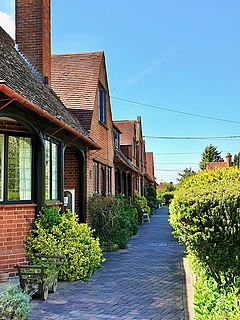 W
WSidney Hill Cottage Homes, whose official name is Sidney Hill Churchill Wesleyan Cottage Homes, is a Grade II listed estate of Wesleyan cottage homes in the village of Churchill in North Somerset. It was opened in December 1907 to provide furnished accommodation for people in need. Designed in an Arts and Crafts Vernacular style by Thomas Ball Silcock and Samuel Sebastian Reay of Silcock and Reay, architects at Bath and London, twelve cottages were constructed on three sides of a quadrangle, with landscaped gardens. The third, or south side, is enclosed by a low terrace wall with wrought iron gates. A large stone sundial, with a spreading base, is set in the centre of the quadrangle. In their original form, each house had a living room, with a small scullery, larder, coal house, and one bedroom with a large storeroom.
 W
WTower House is a former private house in the Withdean area of the English coastal city of Brighton and Hove. Built in 1902 for a former jeweller to King Edward VII, it remained in private ownership until it was converted into flats and a daycare centre in 1988. It is one of the few large houses and villas to survive in the high-class Withdean area—many were demolished in favour of blocks of flats after World War II—and it has been described as "Brighton's finest example of a grand Edwardian house". English Heritage has listed the building at Grade II for its architectural and historical importance.